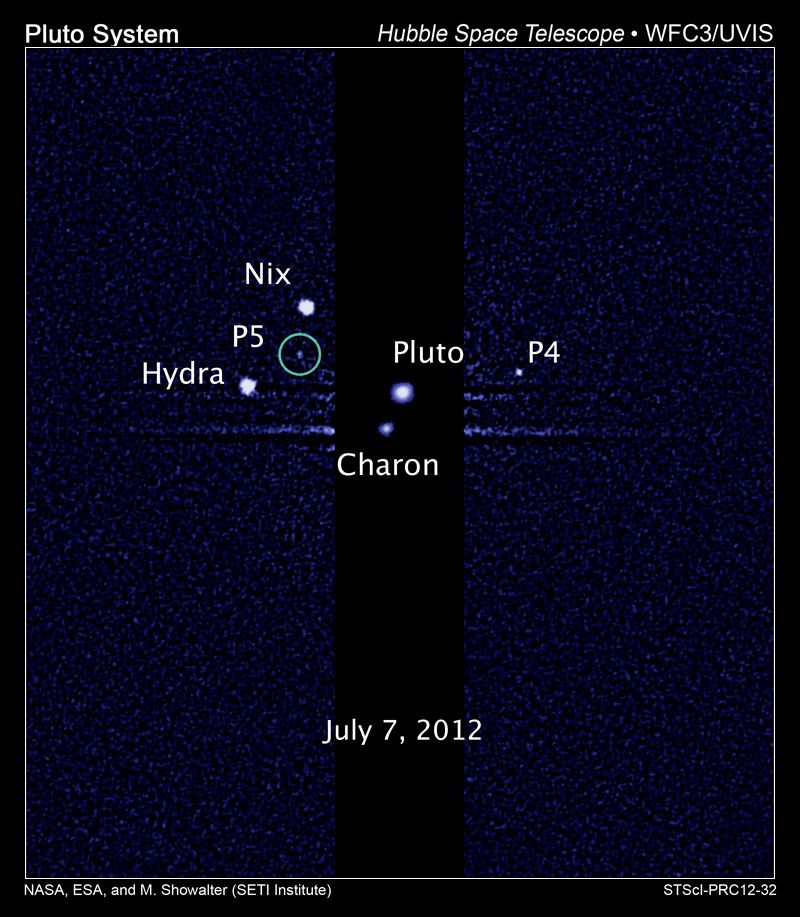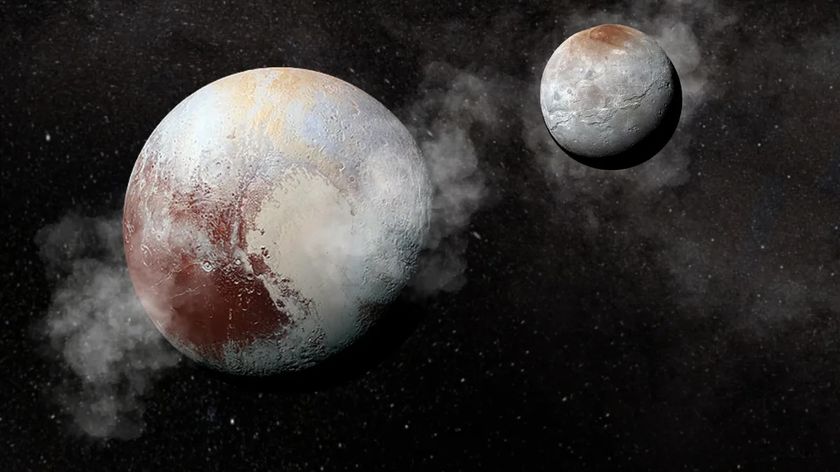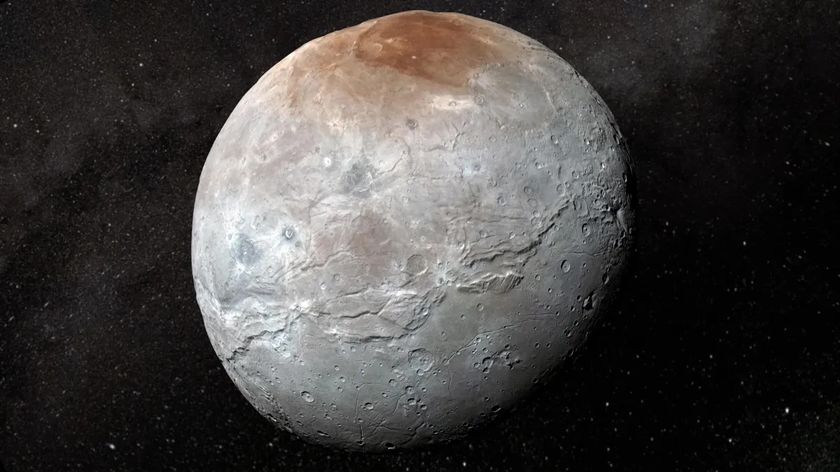
Scientists announced the discovery of a new moon around Pluto today (July 11), bringing the dwarf planet's number of known satellites to five.
The newfound Pluto moon was spotted by researchers using NASA's Hubble Space Telescope. The instrument has also found three other Pluto satellites — P4 last year, and Nix and Hydra in 2005. (The dwarf planet's other known moon, Charon, was discovered in 1978 at the United States Naval Observatory Flagstaff Station in Arizona.)
Here are a few fun facts about the new moon:
Its name is a mouthful
The fifth Pluto moon has been provisionally named S/2012 (134340) 1, but it's unlikely anyone other than astronomers will ever call it that. The satellite also currently goes by the less clunky moniker P5, though that won't last forever.
The International Astronomical Union oversees the naming of celestial bodies, and its guidelines stipulate that objects in Pluto's neighborhood receive mythological names associated with the underworld. Pluto, Charon, Nix and Hydra already meet this requirement; P4 and P5 will someday, too.
It's a tiny satellite
Sign up for the Live Science daily newsletter now
Get the world’s most fascinating discoveries delivered straight to your inbox.
P5 is nothing like our own moon, a giant orb massive enough to be rounded into a sphere by its own gravity. Rather, researchers think P5 is irregularly shaped, with a diameter between 6 and 15 miles (10 to 24 kilometers).
P5 is thus likely the smallest of Pluto's known satellites. Charon measures 648 miles (1,043 km) across, Nix and Hydra range between 20 and 70 miles (32 to 113 km) wide, and P4 is thought to be 8 to 21 miles (13 to 34 km) across. [The Moons of Pluto Revealed (Photos)]
For comparison, Earth's moon is roughly 2,150 miles (3,460 km) wide.
It's not too far from Pluto
P5 zips around Pluto at an average distance of 29,000 miles (47,000 km), placing it outside the orbit of Charon but inside the orbits of Nix, Hydra and P4. The orbits of all five known Pluto moons are roughly coplanar, researchers said.
Earth's moon, on the other hand, circles our planet from about 239,000 miles (385,000 km) away.
P5 makes spacecraft operators nervous
P5's discovery is exciting for researchers who study the outer solar system, but it's likely causing some of them a bit of anxiety as well.
NASA's New Horizons spacecraft is headed to Pluto for a 2015 flyby of the dwarf planet. The detection of P5, and P4 last year, show that the Pluto system is more crowded than scientists had thought. So New Horizons may have to watch its step, since a collision with a particle as small as a BB could take the fast-moving spacecraft out.
"We're finding more and more, so our concern about hazards is going up," New Horizons principal investigator Alan Stern, of the Southwest Research Institute in Boulder, Colo., told SPACE.com.
Stern and others are pointing Hubble at the Pluto system to get a better handle on those hazards, and the inventory they produce should help minimize New Horizons' risks, researchers said.
It may be shrapnel from a huge collision
At roughly 1,430 miles (2,300 km) across, Pluto is considerably smaller than Earth's moon. So researchers are intrigued by its complex collection of satellites.
Scientists currently think that all five of Pluto's known moons are relics of a massive collision between the dwarf planet and another large object in the Kuiper Belt — the ring of icy bodies beyond Neptune's orbit — long ago.
This story was provided by SPACE.com, a sister site to LiveScience. Follow SPACE.com senior writer Mike Wall on Twitter@michaeldwall or SPACE.com @Spacedotcom. We're also on Facebook and Google+.













